This story is part of Next Generation, a series in which we give young makers a platform to showcase their work. Your work here? Get in touch and plot your coordinates as we navigate our future together.
How do we build in the next nature? What technology can be used to enhance our bodies connection to the environment? For architect Menno Brouwer, they find answers in a more sensual understanding of our environments. Menno's graduated at TU Delft in the Faculty of Architecture, with the project The Critical Zone Sensor. This speculates on the architectural project as a sensory extension of the human body. The Critical Zone is a thin layer of several hundred meters thick above and below the surface of our planet in which human activity has a significant impact on Earth’s geology and ecosystems. The project facilitates the sensing devices used to research the Critical Zone and aims to integrate the multiple disciplines of Critical Zone Science to be understood as one complex system. The self-sufficient shell, inspired by biomimicry speculates on an intimate bodily experience of the sensed environment, generating a symbiosis between the project and the Critical Zone.
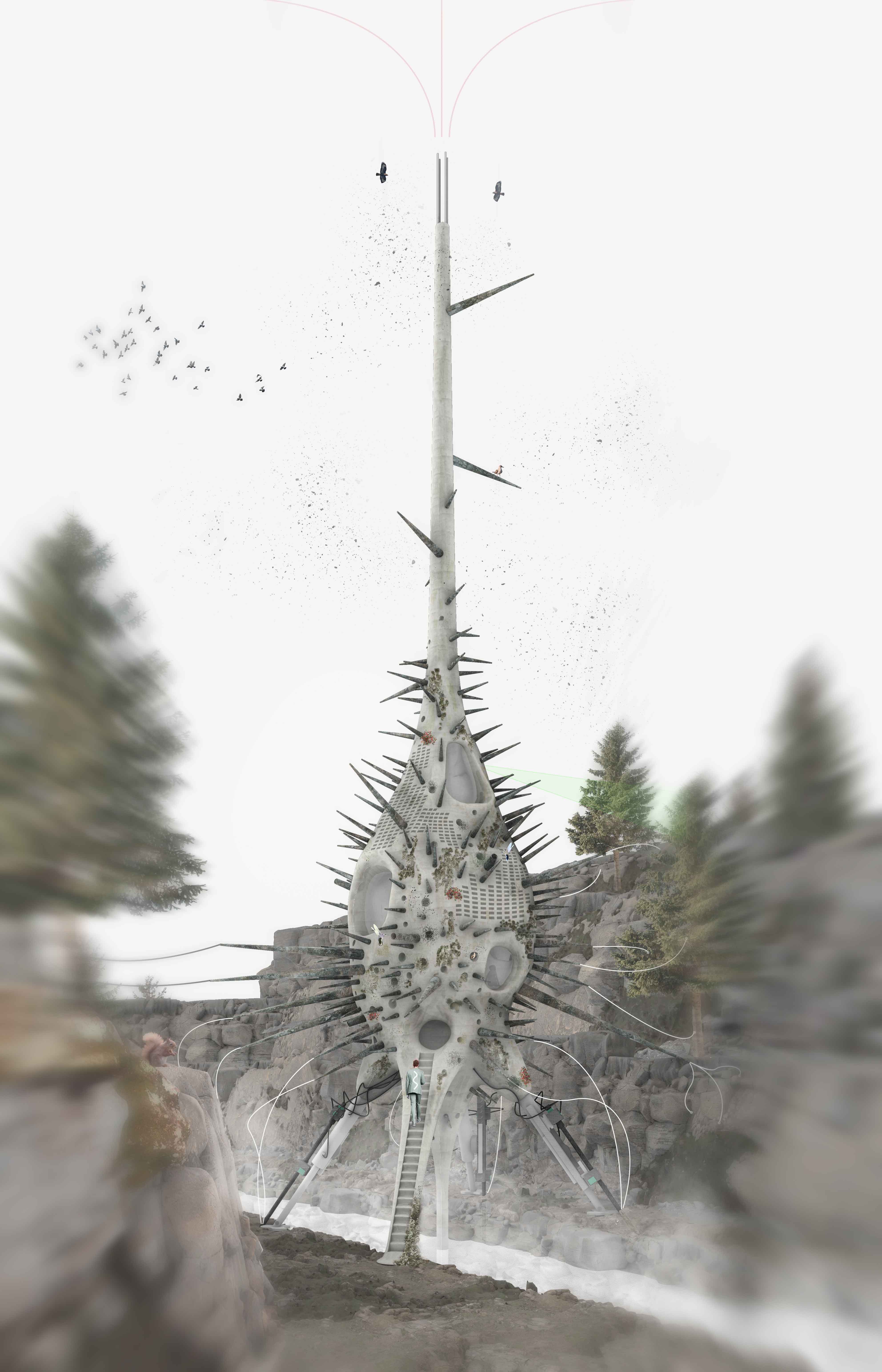
Tell us about your creative process.
As an architect, my creative process is mostly research-based; contextual, philosophical, programmatic, environmental, and architectural. By conducting research on these certain themes I aim to synthesize certain problems, opportunities, or conditions that can be addressed through an architectural project. In the case of this project, I saw an opportunity in the emerging practice of Critical Zone Science. Critical Zone Science aims to integrate multiple scientific disciplines such as geology, hydrology, and ecology to understand a piece of Earth or nature as a heterogeneous and complex system, instead of a fragmented composition. Essentially to better understand the interlinked and complex intricacies of our environment. The project offers an infrastructure and combines the sensing devices that are used for Critical Zone Science, basically forming an observatory for this emerging scientific movement.
To include non-human entities and 'natural' environments in an inclusive manner and transgress anthropocentric architectural approaches.
In the case of this Critical Zone Sensor, I started by investigating the site which is a remote glacial river in the mountains of Kazakhstan; rich in ecological intricacies. I studied how the sensing devices of Critical Zone Science can be optimally distributed in the site and with the project's remote context, I have worked with a performative shell inspired by biomimicry to generate the project's own water and electricity resources. The project goes beyond the technical intention of providing an infrastructure for the sensing devices but takes an extra step and speculates on the architectural project as a sensory extension of the human body. Finally, I like to work with references from a wider cultural field, such as cinema, philosophy, and art, to free myself from architectural conventions and limitations.

What inspired your work?
The work is mostly based on environmental and philosophical research however, there have been certain figures and references that have really opened my eyes as to what architecture could be and to which extent architecture can be applied. To quote Austrian architect Hans Hollein here: “everything is architecture”. The work of French architect Francois Roche (New-Territories, R&Sie(n)) fascinated me with projects that speculate on potential futures freed from more traditional and productive architectural program. Instead, they triggered me to think about architecture in its primal way of inhabiting space that interacts with the more psycho- sexual side of humans such as pain, sexual pleasure, and our relationship to the environment. Moreover, their work encouraged me to include non-human entities and 'natural' environments in an inclusive manner and transgress anthropocentric architectural approaches.
How do we perceive the sensed environment and how can we generate a more intimate relationship between the sensed data and the human body?
Body artist Stelarc and the movies of David Cronenberg provoked me to rethink the interface between the technical sensing devices of the project and the human body. How do we perceive the sensed environment and how can we generate a more intimate relationship between the sensed data and the human body? Their work conceives the interface between the human body and technology not as static conditions (a screen that we look at) but rather sees the human body as an extruded system, something that can be invaded and augmented through technology: having a third robotic hand, a moving sculpture in your stomach, or a transplant with which you can perceive seismic vibrations on the other side of the planet. The body is no longer bound by the skin but performs beyond the skin. This direct interface between the body and technology generates seemingly painful and contestable moments, which are inherently linked to intimacy and eroticism.
Finally, Timothy Morton's concepts of 'Earth Magnitude' and 'Hyperobjects' allowed me to understand the influence of large-scale (climatic) processes on the small scale of the Critical Zone and in return how does a small-scale architectural project relate to the forces that operate at the very large scale.
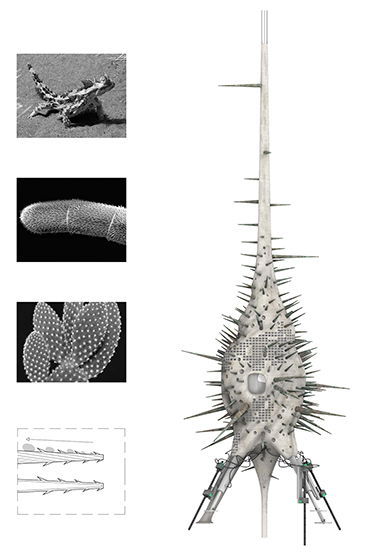
Can you talk about the philosophical concepts that ground your work?
Educated as an architect we are thought to think in the more static and traditional elements of architecture. With all its sensing devices and technology, I conceived the project as a sensing machine and I turned to several philosophical theories to expand upon my understanding of the machine and its relationship to the environment and the human body. Marcel Duchamp's 'Bachelor Machines' and 'Desiring Machines' introduces the idea of the desire of the machine, which is to connect; to its environment, to humans and other machines, in order to set itself in motion and actualize itself. Here, desire is linked to sexual desire, but is not limited to it. It is a pleasurable force of appropriation of what is outside oneself incorporating into oneself. This force of appropriation can be seen as the intimate connection between the sensing devices and the human body within the project.
The Critical Zone can be understood as the near-surface environment of our planet in which complex interactions between soil, water, living organisms, rocks, and air regulate the habitat and availability of all life-sustaining resources.
Moreover, the project is conceived of as a 'Body without Organs'. As defined by philosophers Deleuze and Guattari, the Body without Organs is a structure or a zone without an imposed organization that can be sentient or inanimate. The project is seen as one continuous sensing body, as a reversible surface without an imposed organization, without distinction in structure and without distinction between the internal and the external. Finally, Deleuze's concept of folding creates an ‘architecture of becoming’ where the structure slowly envelops the human body. The structure becomes one with its inhabitants and the project forms a sensory extension of the human body. This results in a folded shell where encapsulated humans are connected to the environment through sensing spikes. This intricate and sensual relationship between the human body and the sensing devices is amplified through an intimate spatial complexity and alternative habitation of squeezing, folding, and crawling.
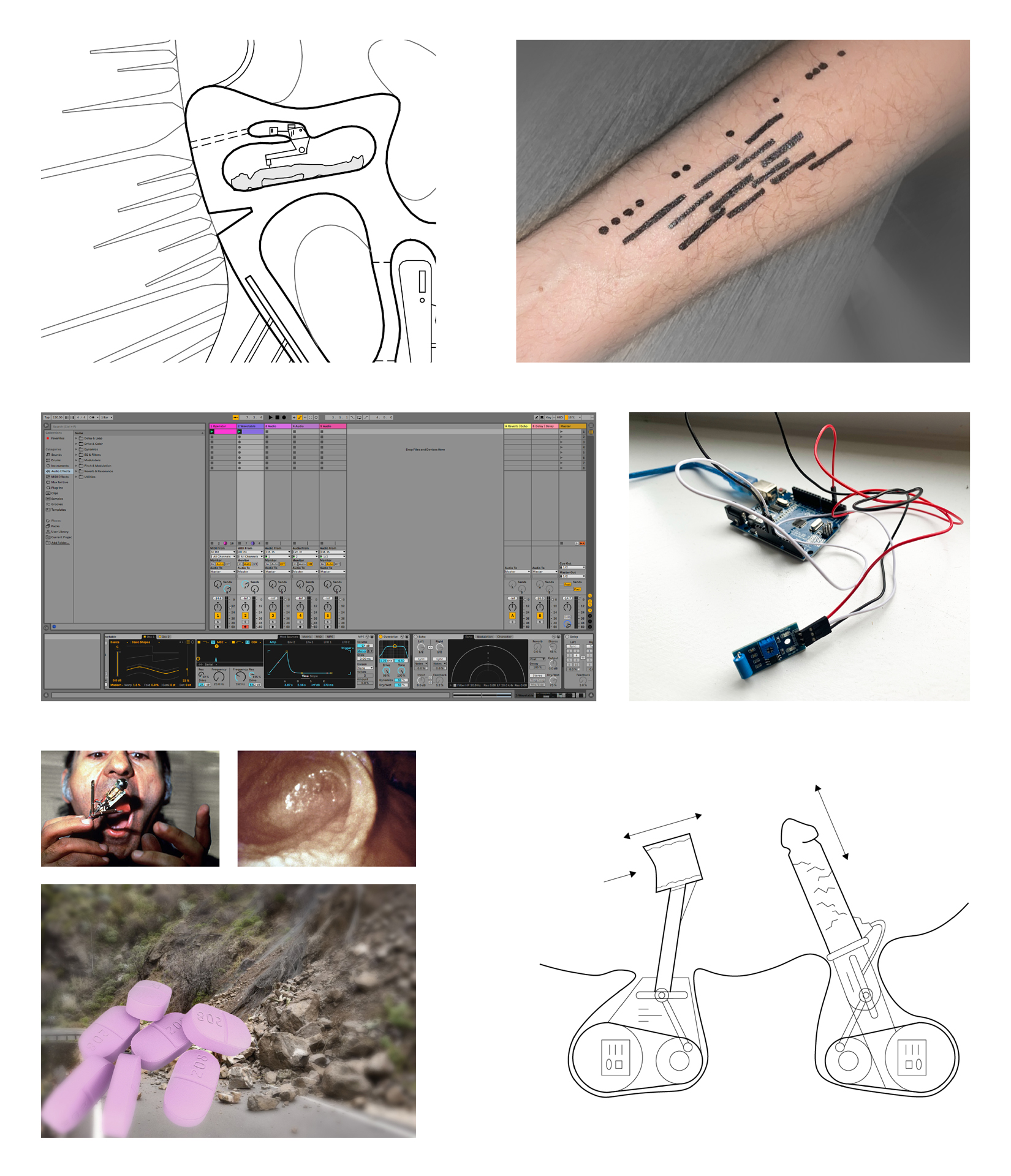
How does this project help us understand our environment?
Up until the turn of the millennium, environmental sciences were understood as rather fragmented disciplines through which it was difficult to assess a piece of Earth or nature in an integral and interlinked manner. Critical Zone Science, which was introduced in the early 2000's aims to integrate these different scientific disciplines such as geology, hydrology, geochemistry, and ecology. Essentially to better understand the interlinked and complex intricacies of our environment. Moreover, The Critical Zone can be understood as the near-surface environment of our planet in which complex interactions between soil, water, living organisms, rocks, and air regulate the habitat and availability of all life-sustaining resources. The Critical Zone is critical in the sense that it is essential to the existence of all terrestrial life, but it is also precisely the zone in which human activity has a significant impact on Earth's geology and ecosystems.
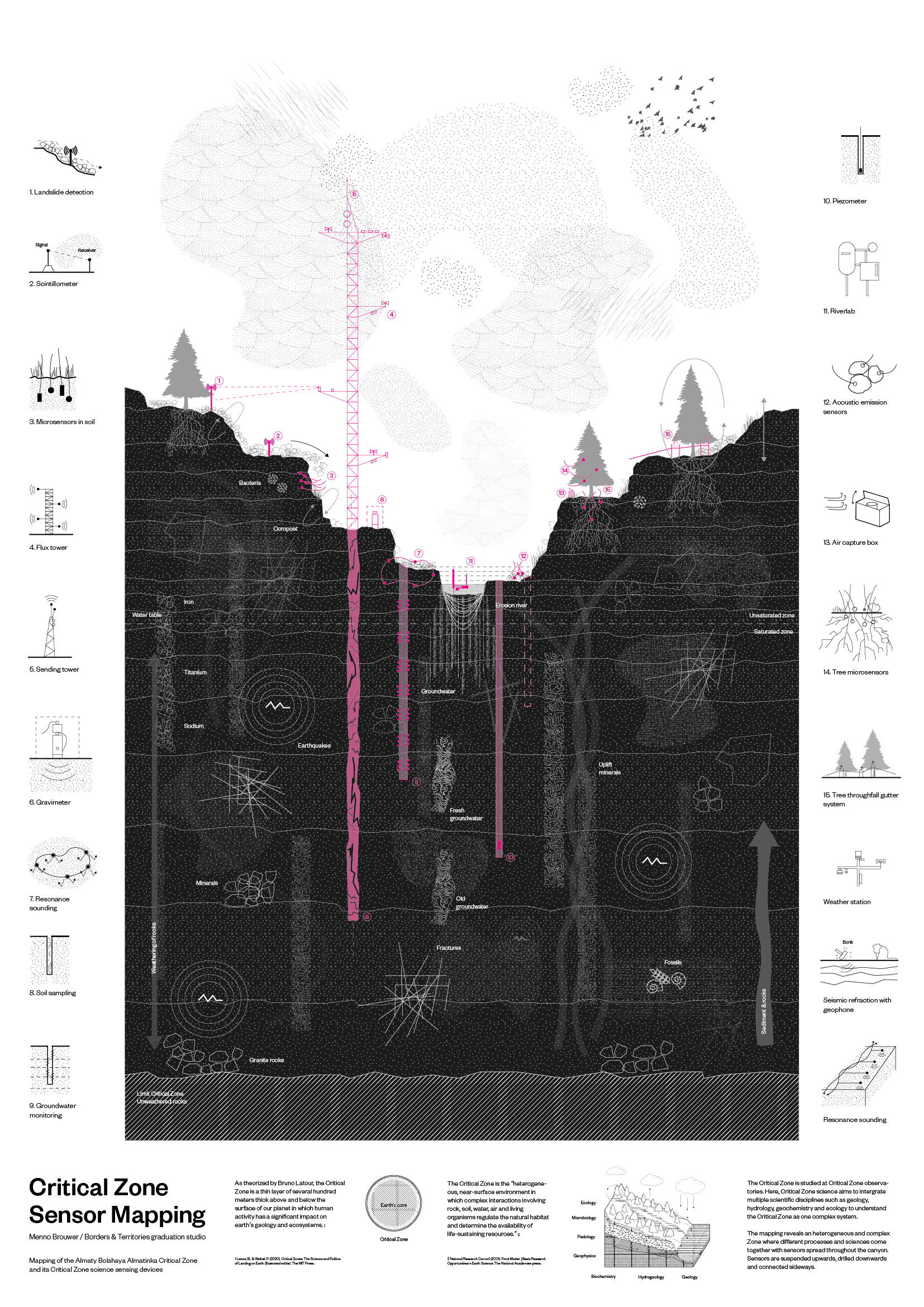
How does this project alter our understanding of being human?
For this question, I would simply like to put forward Donna Haraway's 'A Cyborg Manifesto'. I believe we have moved away from the traditional understanding of being human for quite some time now. In fact, there are quite some cyborgs out there, which blurs the boundaries between what is human and what is not: people with hearing aids, prostheses, or a third ear. Within the project, humans are connected to the environment through technology in a very intimate and bodily manner. The bodies are augmented and perform beyond the skin, through hearing extensions, electrical shocks, sexual stimulation, and designer drugs, transgressing the traditional understanding of being human and blurring the boundaries.
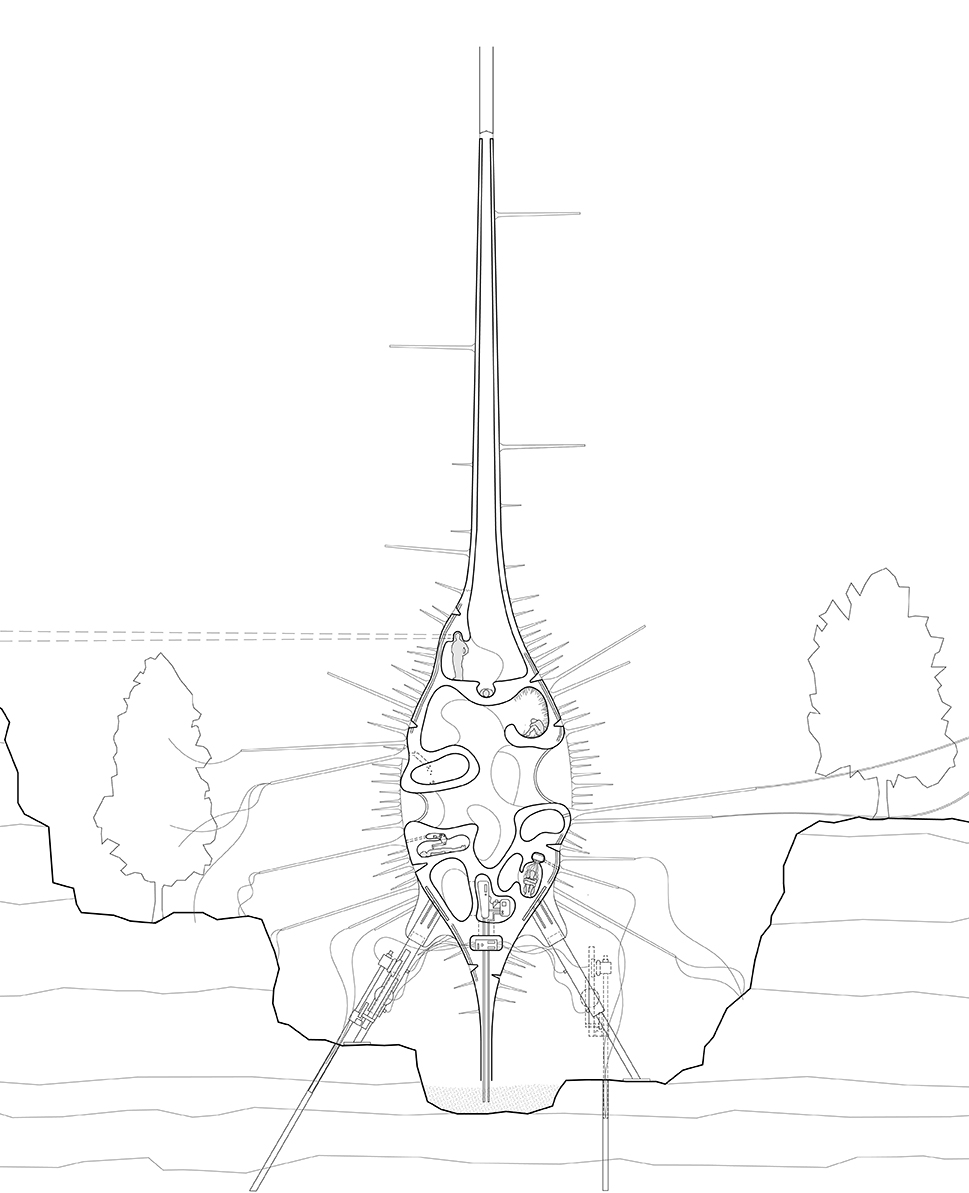
How would you scale such a project?
Ultimately, the idea of the Critical Zone Sensor can be applied on a planetary scale to all sorts of Critical Zones around the world. By speculating on a network of sensing devices, the Critical Zones can (and should) be understood as interlinked, complex, and heterogeneous environments that all relate to each other and influence each other. When we would understand our environment as these interlinked zones, we can really comprehend the influence of large-scale climatic processes around the world on the small scale of the Critical Zones.
This flexibility to adapt to different Critical Zones around the planet is embedded in the design to a certain extent. The project's flexible legs can adapt to different terrains and the distribution of sensing devices through the spikes can connect to all sorts of conditions and environments. As a potential further development of the project, each Critical Zone Sensor could be understood as a different character with its own specificities based on its environment and energy requirements. One sensor could be developed for more tropical climates to make use of the extensive sun exposure, and another sensor could have elements that generate energy out of wind in very windy climates.
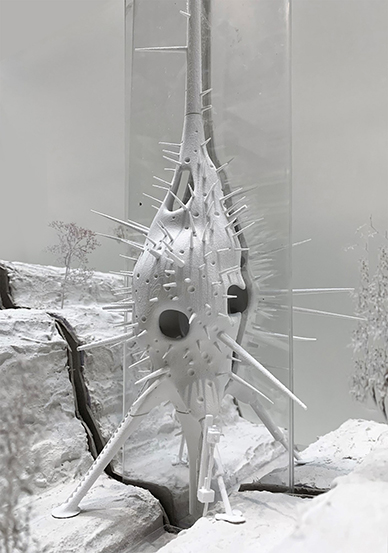
What’s next for you? Any other exciting projects?
With the many creative interests that I have, I have recently started this multidisciplinary identity called menna+ as a vehicle for all my creative output such as architectural projects, music, and stage design. I'm very interested in applying architectural thinking to other disciplines and how they can strengthen and influence each other. I have recently worked on a stage design for Paradigm festival in Groningen, north of the Netherlands, and hopefully there's more to come soon.
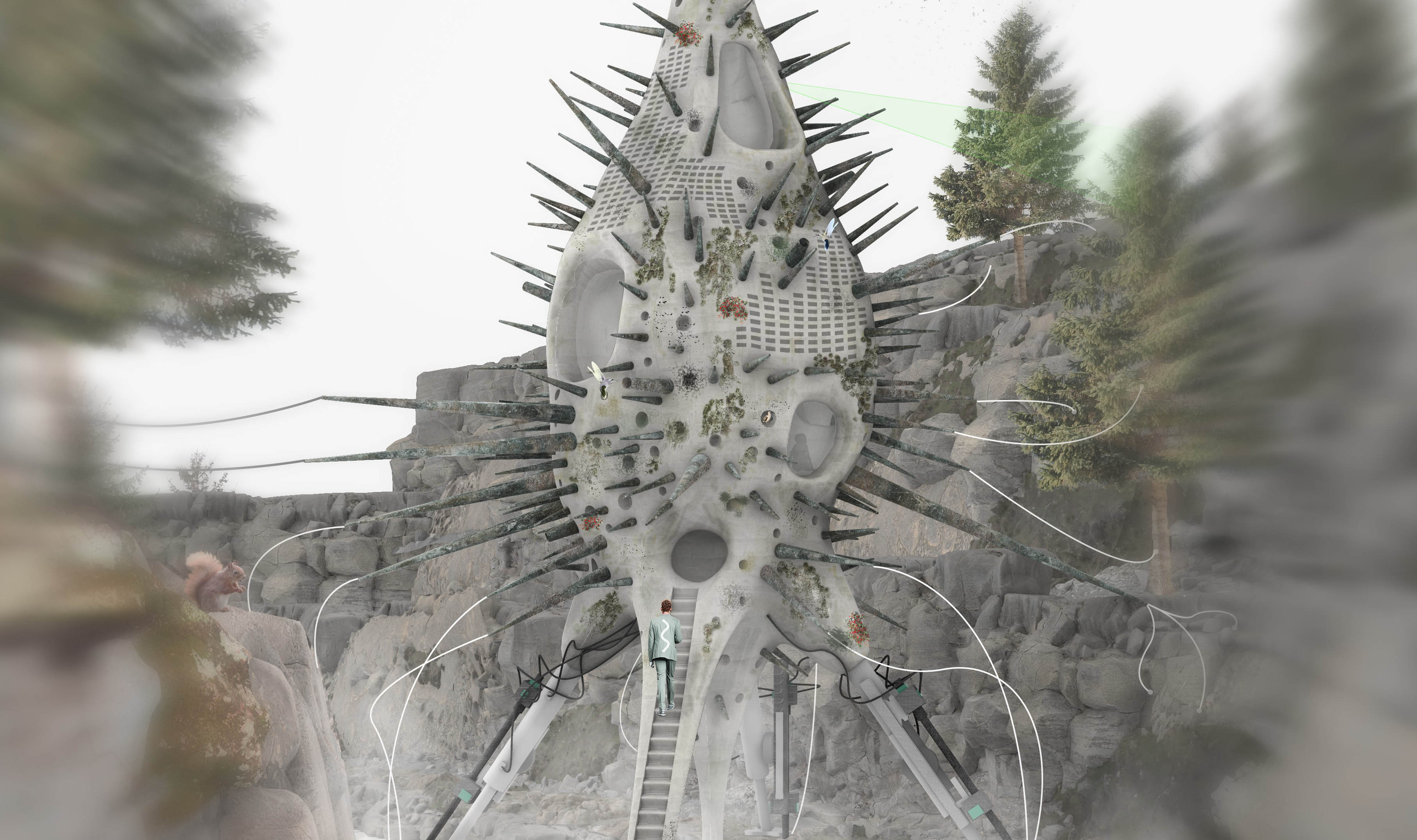
mrdbkmwxqq
Muchas gracias. ?Como puedo iniciar sesion?
Muchas gracias. ?Como puedo iniciar sesion?
Posted on